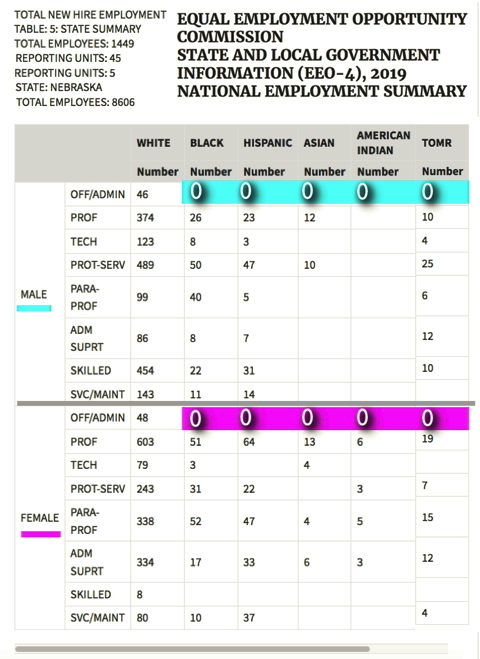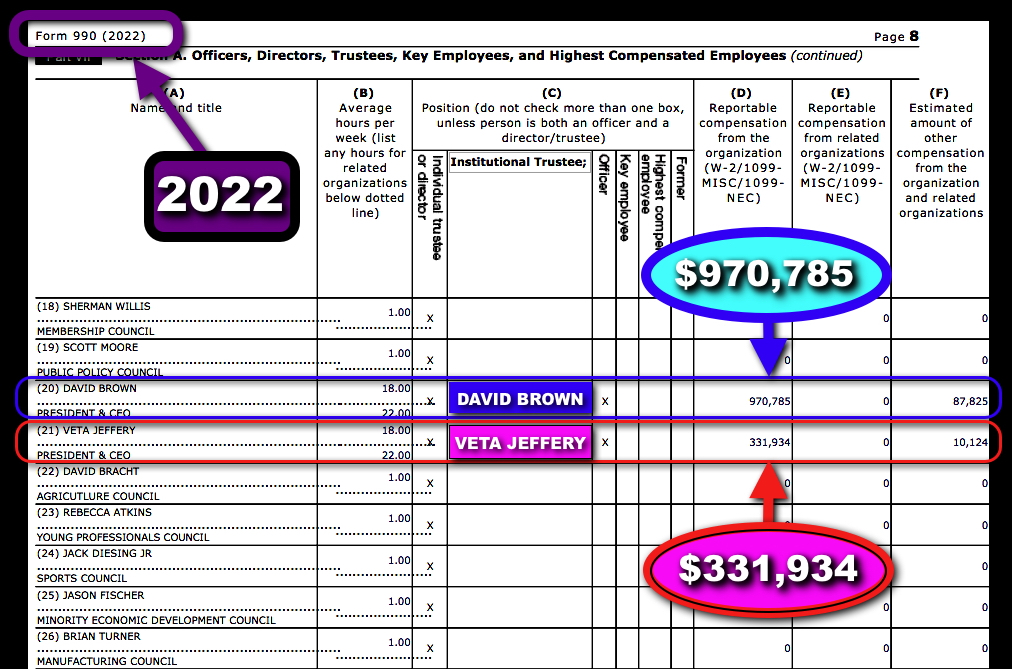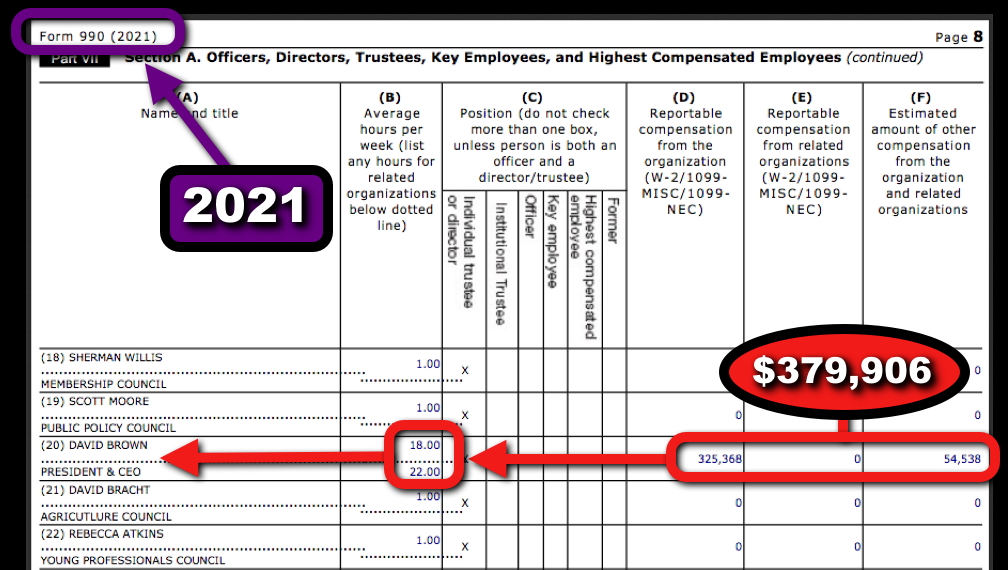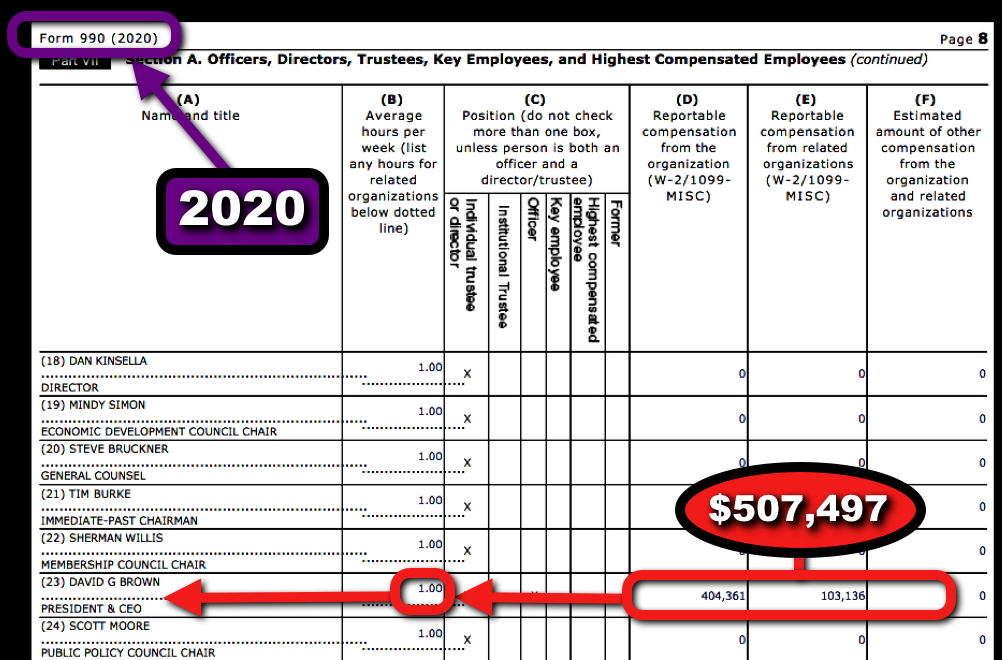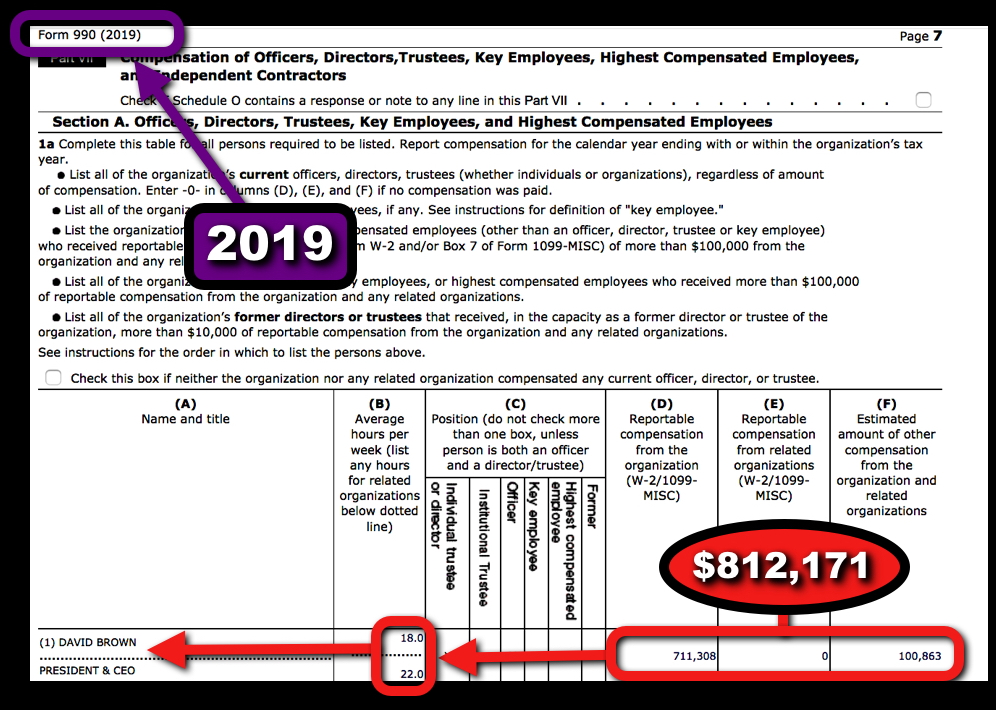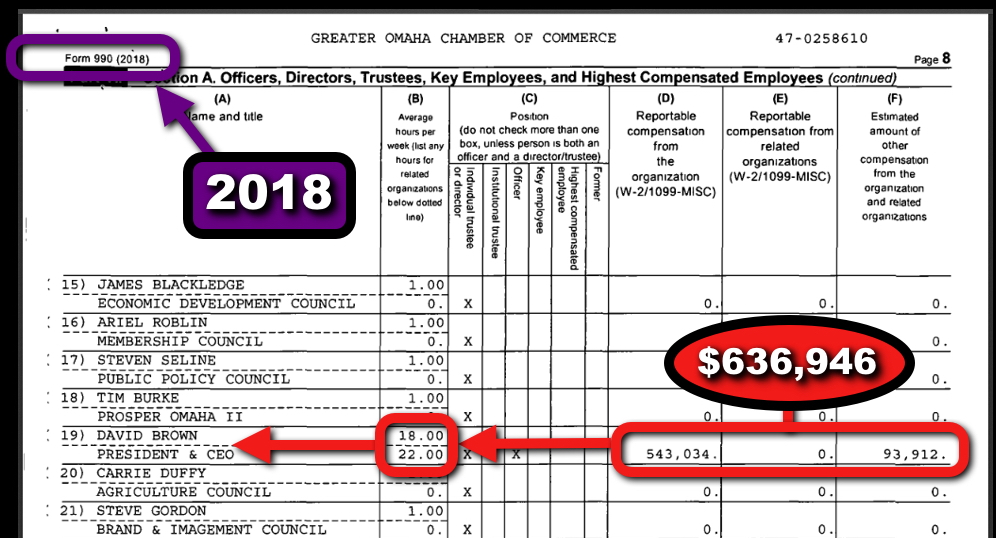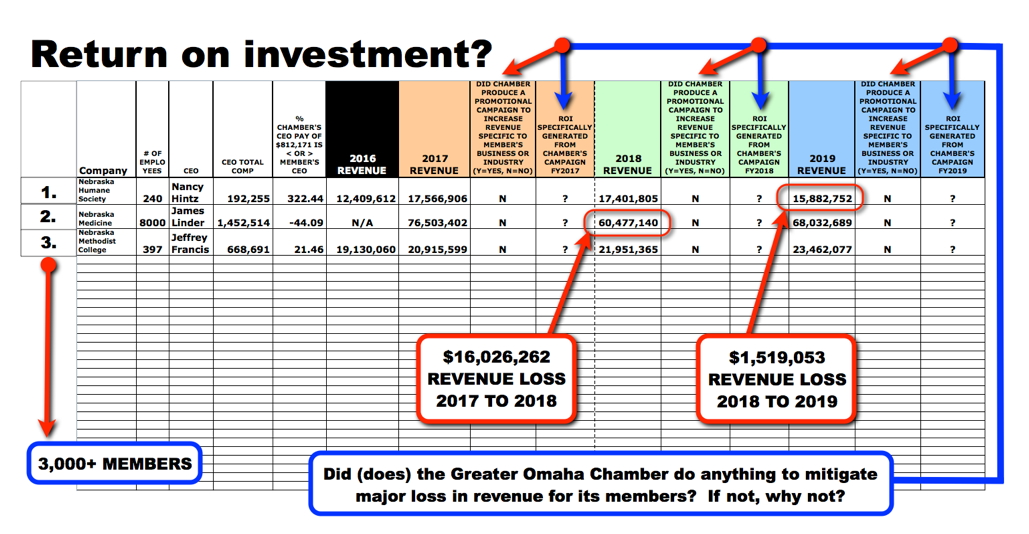DEFINITION: Commerce |'kämers| (abbr.: comm.) noun - the activity of buying and selling, especially on a large scale: the possible increase of commerce by a great railroad.
QUESTION 1: Does the Greater Omaha Chamber of Commerce (GOCC) perform as "the business engine" to actively solicit and propel new members and "engage" its existing members in "commerce?"
QUESTION 2: Return on Investment (ROI) - Can new and existing members report an increase in their revenue, or profit, or an increase in market share as a direct result of their membership in the GOCC?
QUESTION 3: Is the GOCC's focus on "commerce," especially the strategic growth and development of individual member businesses; or "branding" itself as a "business social club" primarily for White-male owned and/or controlled businesses, with token acknowledgements to women and minority owned businesses?


As posted on the Greater Omaha Chamber's website, "Race/Ethnicity: With a diverse cultural makeup, ethnic minorities comprise 13.5% of our population including a Hispanic populace of 10.8%." However, the Greater Omaha Chamber's membership does not mirror racial or gender demographics for either public sector (EEO-4) employers or private sector (EEO-1) employers. As engineered and sustained by the Federal Government, State of Nebraska, City of Omaha, Greater Omaha Chamber of Commerce, and metro Omaha realtors:
(a) The overwhelming majority of "people of color" were and remain financially, economically, academically, and vocationally confined (before and after prohibition of such segregation) by the U.S. Federal Government, State of Nebraska, City of Omaha, Greater Omaha Chamber of Commerce, realtors, etc., to "live" in restricted "redlined" areas.
Video (at right): The Union for Contemporary Art in Omaha, NE presents, "How redlining and the interstate highway system intentionally destroyed Black commerce and neighborhoods and sustain urban blight."
(b) (c) Restricted "redlined" areas in Omaha have ALWAYS had the worst public schools; the perpetually most segregated public schools (see video at right) with five-(5) predominately White K-12 public schools districts (Westside, Ralston, Millard, Elkhorn) operating within the city limits of the larger minority K-12 public school district (Omaha Public Schools); the lowest student achievement scores; highest perpetual "dropout rate" for both White and Black K-12 teachers; highest incarceration rate for minority juveniles; highest unemployment (see graph below); highest crime rate (see graph below, plus click here and here); worst access to health care; highest rates of sexually transmitted diseases; and the lowest rate of minority new business creation as perpetually promoted by lobbyists who do not represent "people of color"; etc.
Conflicts of interest? The City of Omaha and Douglas County operate out of the same building, share resources, and actively participate in the "constant exchange of information." In some circles, the aforementioned "relationship" can certainly foster . . . collusion. Plus, the Omaha Airport Authority is overseen by a five-person Board of Directors, members of which are appointed by the Mayor of Omaha; and members of the Omaha Police Officers Association are employees of the City of Omaha.
For transcript, click here.
(d) Beginning in 2008, as President/CEO of Community Telecast, Inc. (CTI22), I personally produced, filmed, edited, and broadcast over forty-(40) "Omaha Business Showcase" programs on Cox cable's Channel 22, with each thirty-(30) minute program "showcasing" businesses located throughout metro Omaha. The program was very successful, and I sought additional businesses to showcase. In 2009, I met with executives at the Greater Omaha Chamber to discuss uniquely promoting the Chamber's roster of member businesses in "prime time," which no commercial stations could do because of their contract affiliations with national broadcast networks (ABC, CBS, NBC, FOX, and PBS). On at least five-(5) occasions during our 60+ minute meeting I had to repeatedly tell the Chamber’s “leadership team” CTI22 was NOT there to promote business development specific to North Omaha or to promote minority businesses. The Greater Omaha Chamber rejected my proposal. As I reported to the Omaha City Council in 2011, the Greater Omaha Chamber was affixed to playing the race card instead of promoting Omaha's businesses.
Krypton Comics
Omaha Business Showcase: Rebecca's Indian Trading Post
Omaha Business Showcase:
Omaha Blue Waves Martial Arts


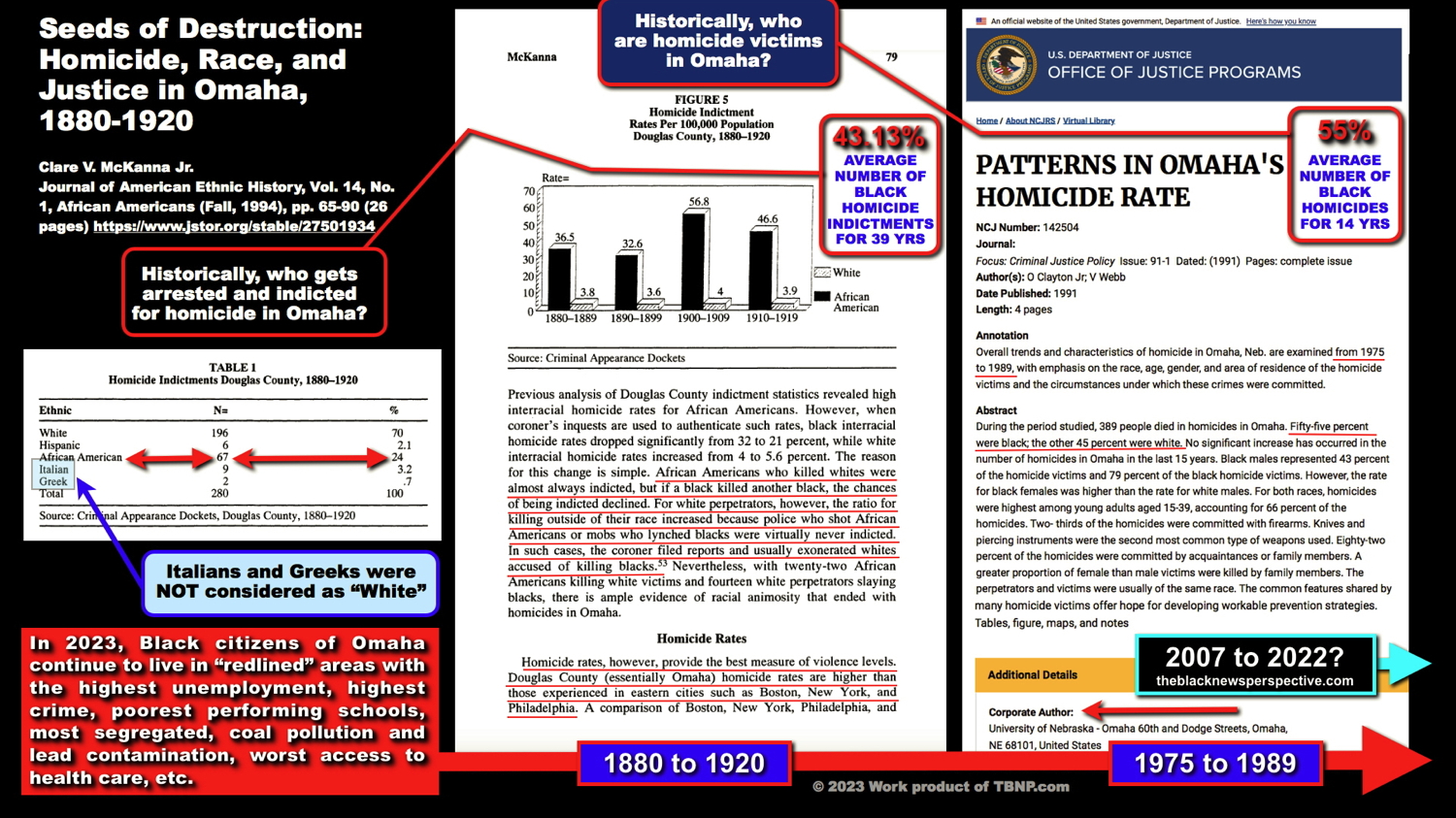
1860 to 2020 = No significant change.
As researched, validated, and documented by UNO, UNL, DOJ, EEOC, CDC, PEW RESEARCH, GALLUP, NEW YORK TIMES, and literally thousands and thousands of additional academicians in public sector colleges and universities, and indepent private sector research institutions, there has never been any significant change in the lower socio-economic status and the increased incarceration of people of color, especially for the overwhelming majority of Black people. Notably, "significant change" has not occurred despite the existence, indifference to, or elimination of Affirmative Action (AA) and/or Diversity, Equity, and Inclusion (DEI) programs.
2020 to 2260 = No projected change.
If present trends in the data continue, the racial wealth gap is headed to a steady state with average White wealth at least five times greater than average Black wealth - even through 2260!
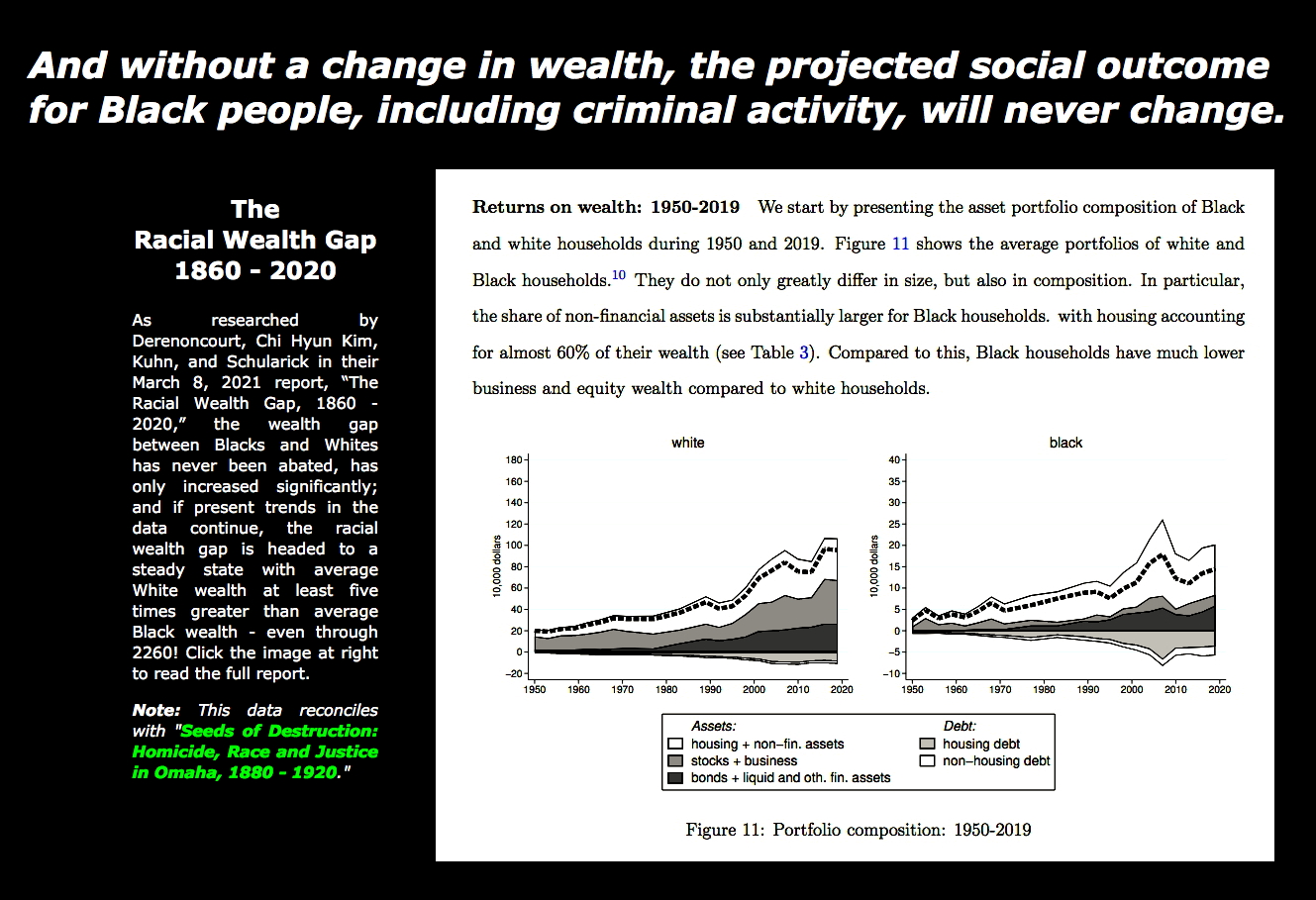
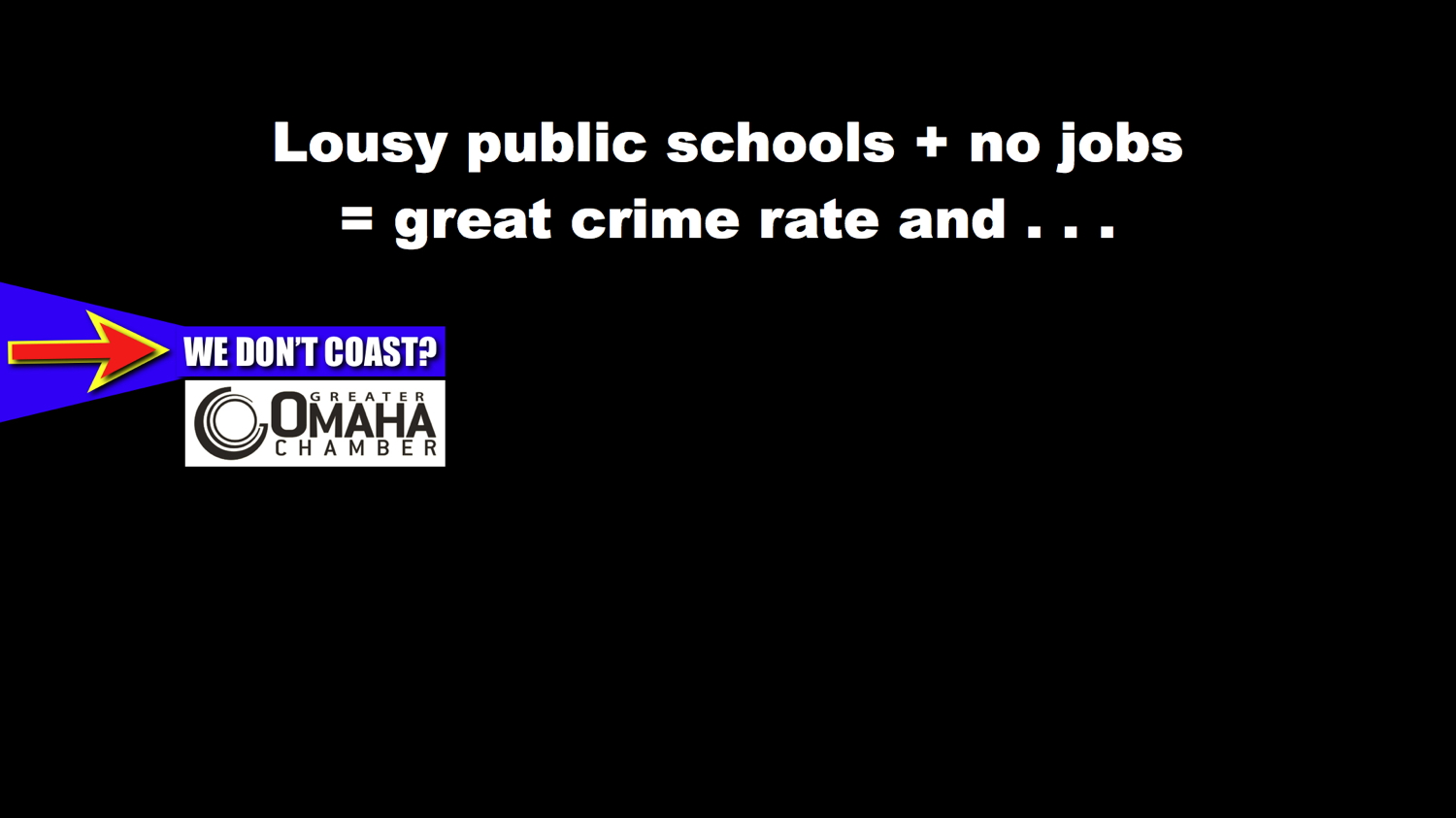



|
Are minorities "worthy?" As validated by Nebraska's EEO-4 report for 2019, no minority women or men were hired into any "senior level" public sector jobs that pay over $70,000 per year; and minority businesses are only 0.20% of the GOC's membership. |
|
 |
|
|
Nebraska's 2021 "Job Patterns For Minorities And Women In Private Industry (EEO-1)" reports 65.73% of "Executive/Senior Level Officials and Managers " positions are held by men versus only 34.27% held by women; and for "First/Mid-Level Officials and Managers," 58.39% of positions are held by men versus only 41.61% held by women. |
||
|
Again, as posted on the Greater Omaha Chamber's website, "Race/Ethnicity: With a diverse cultural makeup, ethnic minorities comprise 13.5% of our population including a Hispanic populace of 10.8%." However, the Greater Omaha Chamber's membership does not mirror racial or gender demographics for either public sector (EEO-4) employers or private sector (EEO-1) employers. Why does the Greater Omaha Chamber place less "worth" on women and minorities than public and private sector employers? |
||
Who is "worthy" of being financially rewarded?
Between 1978 and 2019 CEO compensation has grown 940% while typical worker compensation has risen by only 12% during this same time, which is often perceived as obscene by many members of the "rank and file." In January 2023 a local multimedia client engaged me to review highly paid executive compensation particular to non-profits in metro Omaha. As validated by research from the Bureau of Labor Statistics (below), the average compensation for Chief Executive Officers in Omaha-Council Bluffs is $239,610. Therefore, one might "assume" compensation paid to the CEO of the Greater Omaha Chamber of Commerce is comparable, right?
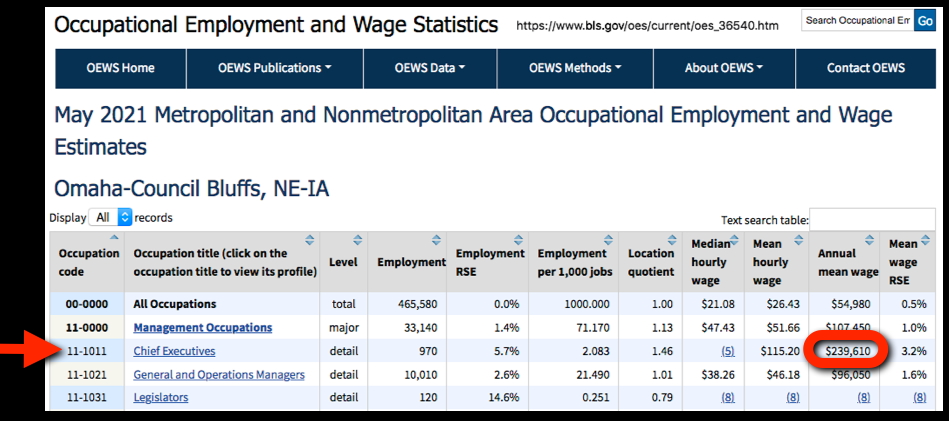
As validated by the Greater Omaha Chamber's IRS Form 990 (below), in 2019, compensation paid to the Chambers' Chief Executive Officer, David Brown, was 239% greater than the average annual compensation paid to CEOs in 2021 for metro Omaha-Council Bluffs? That's right, $812,171 versus $239,610. Is membership in the Greater Omaha Chamber truly a valid "benefit," providing return on the investment (ROI) for its members, or is the Chamber's CEO the biggest beneficiary? From 2018 to 2022 here's what the Chamber paid its CEO!
CLICK ABOVE IMAGE TO DOWNLOAD FULL REPORT
CLICK ABOVE IMAGE TO DOWNLOAD FULL REPORT
CLICK ABOVE IMAGE TO DOWNLOAD FULL REPORT
CLICK ABOVE IMAGE TO DOWNLOAD FULL REPORT
CLICK ABOVE IMAGE TO DOWNLOAD FULL REPORT
EXECUTIVE COMPENSATION 101: It's all about "performance and leadership." The Good, the Bad, and the Ugly
THE GOOD:
Jack Welch. Under Welch's leadership at General Electric, GE expanded its "scale of operations," both vertically and horizontally to increase market value from $12 billion in 1981 to $410 billion when he retired, making 600 acquisitions while shifting into emerging markets. Welch pioneered a policy of informality at the work place, allowing all employees to have a small-business experience at a large corporation. Welch worked to eradicate perceived inefficiency by trimming inventories and dismantling the bureaucracy that had almost led him to leave GE in the past. He closed factories, reduced payrolls and cut lackluster units.
Lee Iacocca. American automobile executive best known for the development of the Ford Mustang, Continental Mark III, and Ford Pinto cars while at the Ford Motor Company in the 1960s, and for reviving the Chrysler Corporation as its CEO during the 1980s. He was president of Chrysler from 1978 to 1991 and chairman and CEO from 1979 until his retirement at the end of 1992. He was one of the few executives to preside over the entire "scale of operations" of two of the United States' Big Three automakers.
Steve Jobs. American businessman, inventor, and investor best known for co-founding, with his early business partner Steve Wozniak, the technology giant Apple Inc. Jobs was also the founder of NeXT and chairman and majority shareholder of Pixar. He was a pioneer of the personal computer revolution of the 1970s and 1980s, and evolving the "scale of operations" from an IT company producing industry-leading computer hardware and software, to an electronics company (iPhone, iPad, iPod, etc.) and media company (iTunes, AppleTV, etc.).
Conversely, although David Brown and Veta Jeffrey wore the title of CEO, they performed as sheep, not as wolves.
THE BAD: The Greater Omaha Chamber produces nothing, and it's "networking" and pseudo-economic develoopment services have always been and remain racially and sexually discriminatory, or at best, its services are "soft and passive," and not designed to strategically increase the individual revenue ("commerce") and profitability of its members. Many CEOs who are members of the Greater Omaha Chamber hold positions with considerably more employees, greater complexity of workforce dynamics (technology, healthcare, agriculture, manufacturing, etc.), greater span of control (public/private sector, profit/non-profit, union/non-union, multi-site/multi-state, and international environments), greater risk from potential work related hazards, and greater diversity of work conditions. Conversely, although David Brown and Veta Jeffrey wore the title of CEO, they performed as sheep, not as wolves.
THE UGLY: Here are the facts: Between 2018 and 2022 the Greater Omaha Chamber of Commerce paid CEO David Brown $3,307,305 - his average annual total compensation was $661,461. Conversely, Veta Jeffery is both Black and a woman, and she "lacked the business acumen and privilege afforded to White males," and therefore, was hired as yet another token minority figurehead in one of the most perpetually segregated cities in the United States. Jeffrey was extremely lucky to be paid one-half of Brown's average compensation at $331,934.
CEOs of major corporations or high ranking elected officials (governors, mayors, city managers, etc.) with responsibility for comparable "urban" subdivisions (city, county, state, etc.), are immediately responsible for directing the design, production, distribution and monetization of tangible products (tool and die; automobile industry; food manufacturers; multimedia conglomerates, petroleum and petro-chemical, pharmaceutical, etc.), or the launch and delivery of expansive and self-sustaining services such as SaaS (software as a service, "cloud" computing), electrical and water purification and waste water utilities, NBA, NFL, AT&T, etc.) - which does not include the Greater Omaha Chamber! Again, although David Brown and Veta Jeffrey wore the title of CEO, they performed as sheep, not as wolves.
Did Brown's "leadership and performance" eradicate the Omaha Chamber's perpetual racial and sexual discrimination to chart Omaha's economic development? Answer: No.
Did Brown's "leadership, performance and scale of operations" justify the Chamber compensating its CEO 239% greater than the average annual compensation paid to CEOs in metro Omaha-Council Bluffs? Answer: No.
Consider the following snapshot:
Company |
CEO |
W2 |
Other Comp |
Total |
# Employees |
Source |
Year |
| Greater Omaha Chamber | David Brown | $711,308 | 100,863 | $812,171 | 46 |
IRS Form 990 | 2019 |
| Nebraska Humane Society | Nancy Hintz | 192,255 | 0 | 192,255 | 240 |
IRS Form 990 | 2019 |
| Nebraska Medicine | James Linder | 1,423,430 | 29,084 | 1,452,514 | 8,000 |
IRS Form 990 | 2020 |
| Nebraska Methodist College | Jeffrey Francis | 547,699 | 120,992 | 668,691 | 397 |
IRS Form 990 | 2019 |
The above exhibit has absolutely nothing to do with playing the "race card," because, clearly, the "Business Card" is being played with the above assessment. When talking about "business," for both for-profit and non-profit employers, how employers spend (invest) their money is measured as ROI, which ultimately is about performance. With regard to "performance," I've personally reviewed and/or approved 443,810 performance evaluations; I wield extremely robust subject matter expertise in this space (public/private sector, profit/non-profit, union/non-union, multi-site/multi-state, and international environments, which includes aerospace, public education, financial services, health care, gaming, IT, retail, manufacturing, municipal government, property/casualty insurance, broadcasting, and HR Consulting). Accordingly, my assessment of the Chamber's underperformance is consistent with my expertise evaluating the performance of employees, employers, and industries in my role directing all aspects of human capital management, including recruitment, compensation (including executive pay), organizational development, heatlh benefits, etc.
The Chamber's failure to provide a measurable ROI to its members should not be confined to the Chamber's staff, but include its Executive Committee, because they allow the underperformance. Frankly, no business should consider joining the Chamber or renew its membership unless the Chamber provides actual evidence membership will provide a measurable and immediate ROI. Note the following exhibit:
In summary, the "mission" of the Greater Omaha Chamber is to increase business "commerce." Equally important, if the Chamber is going to achieve its "mission," shouldn't it be aware of the financial health of its members? Or, perhaps, the Chamber's membership are not "worthy" of such consideration?
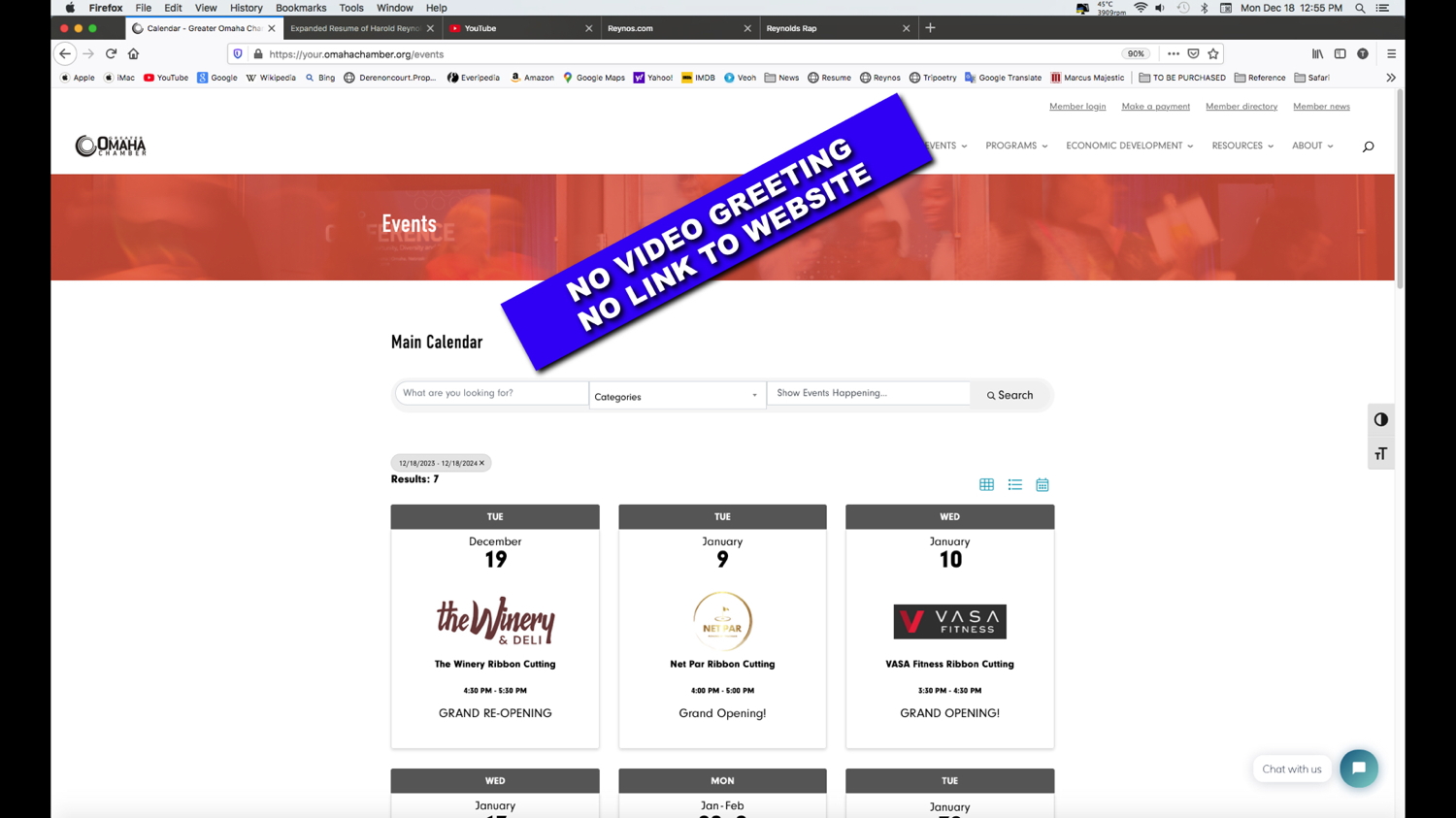
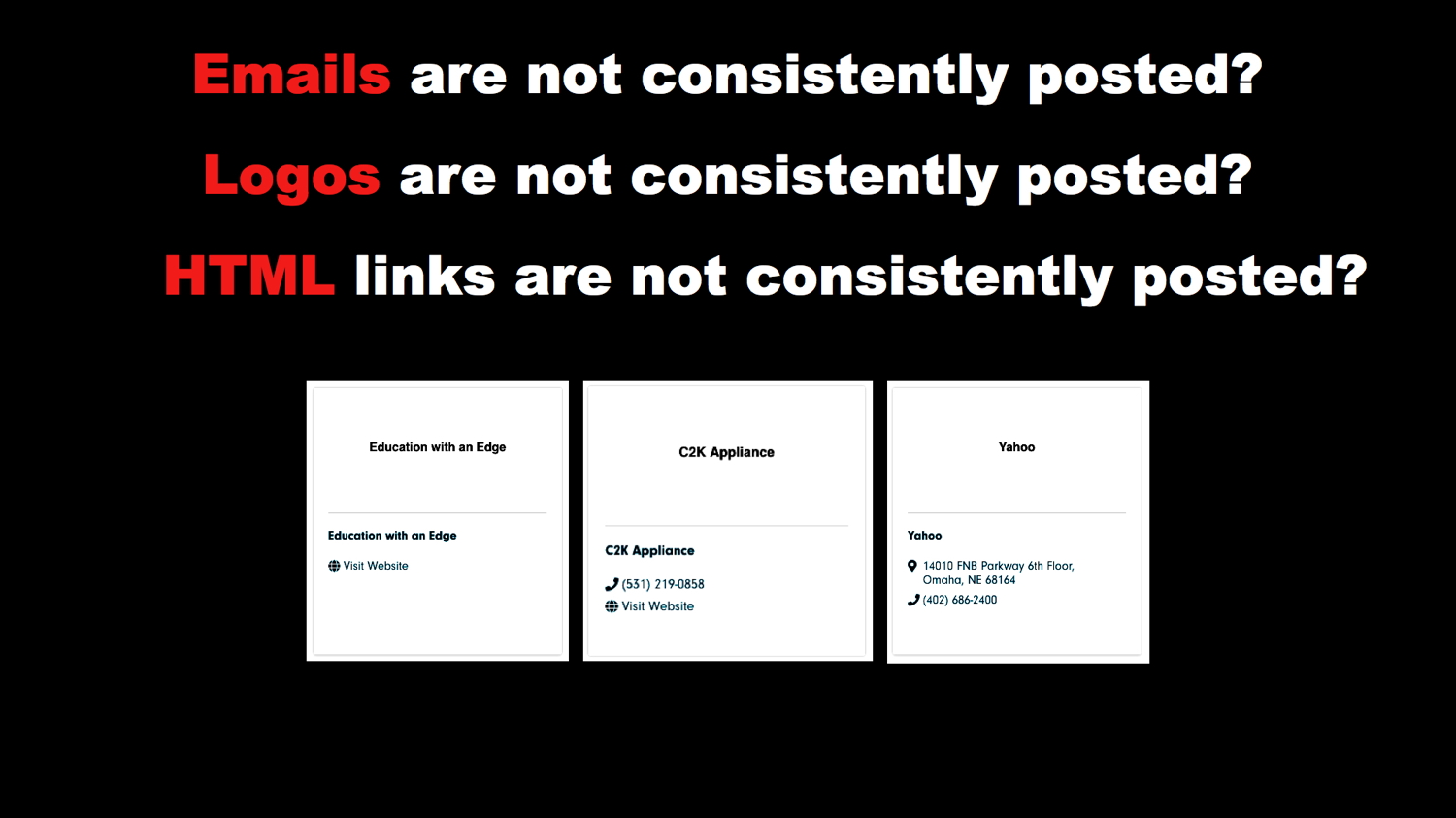
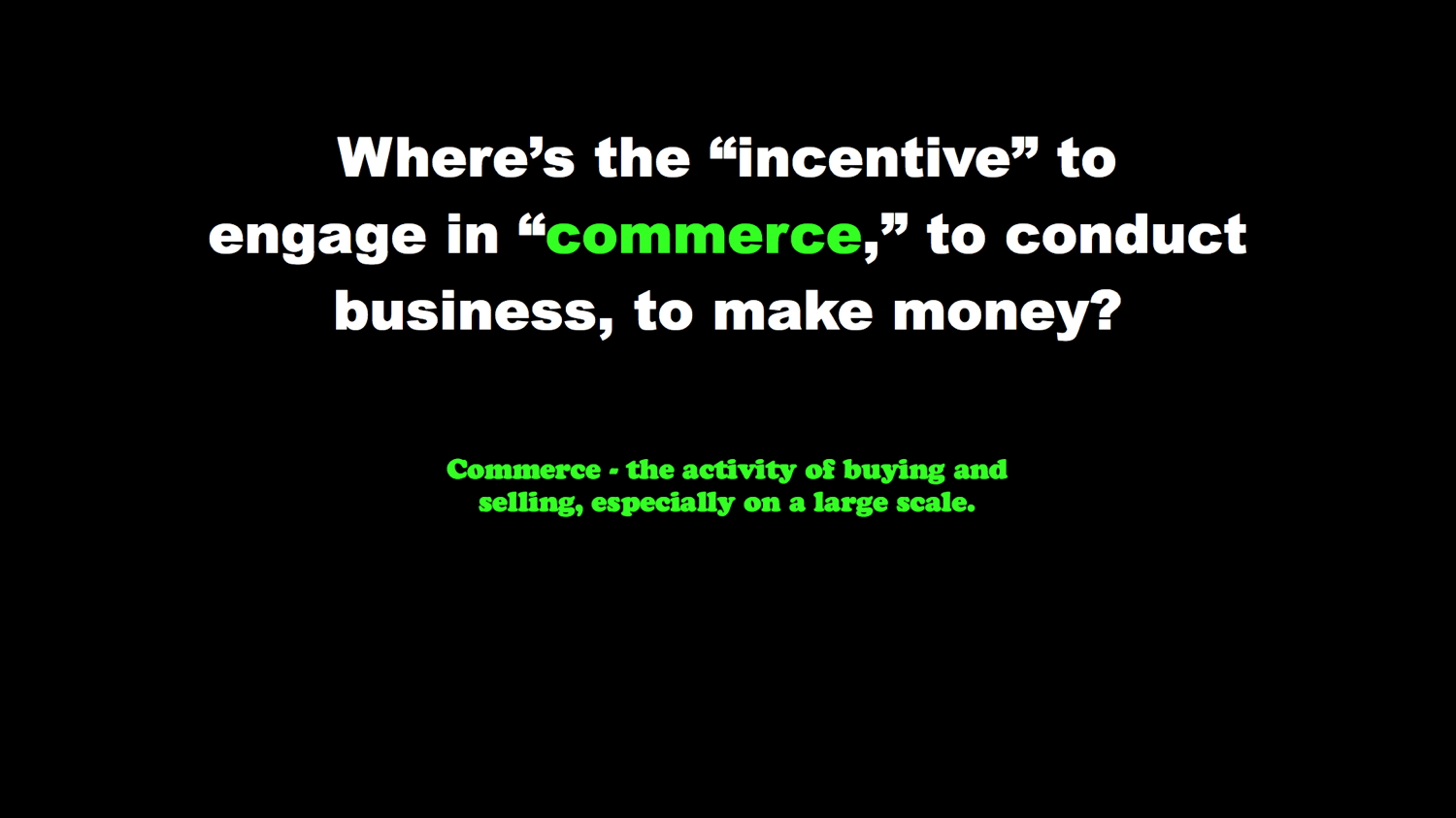
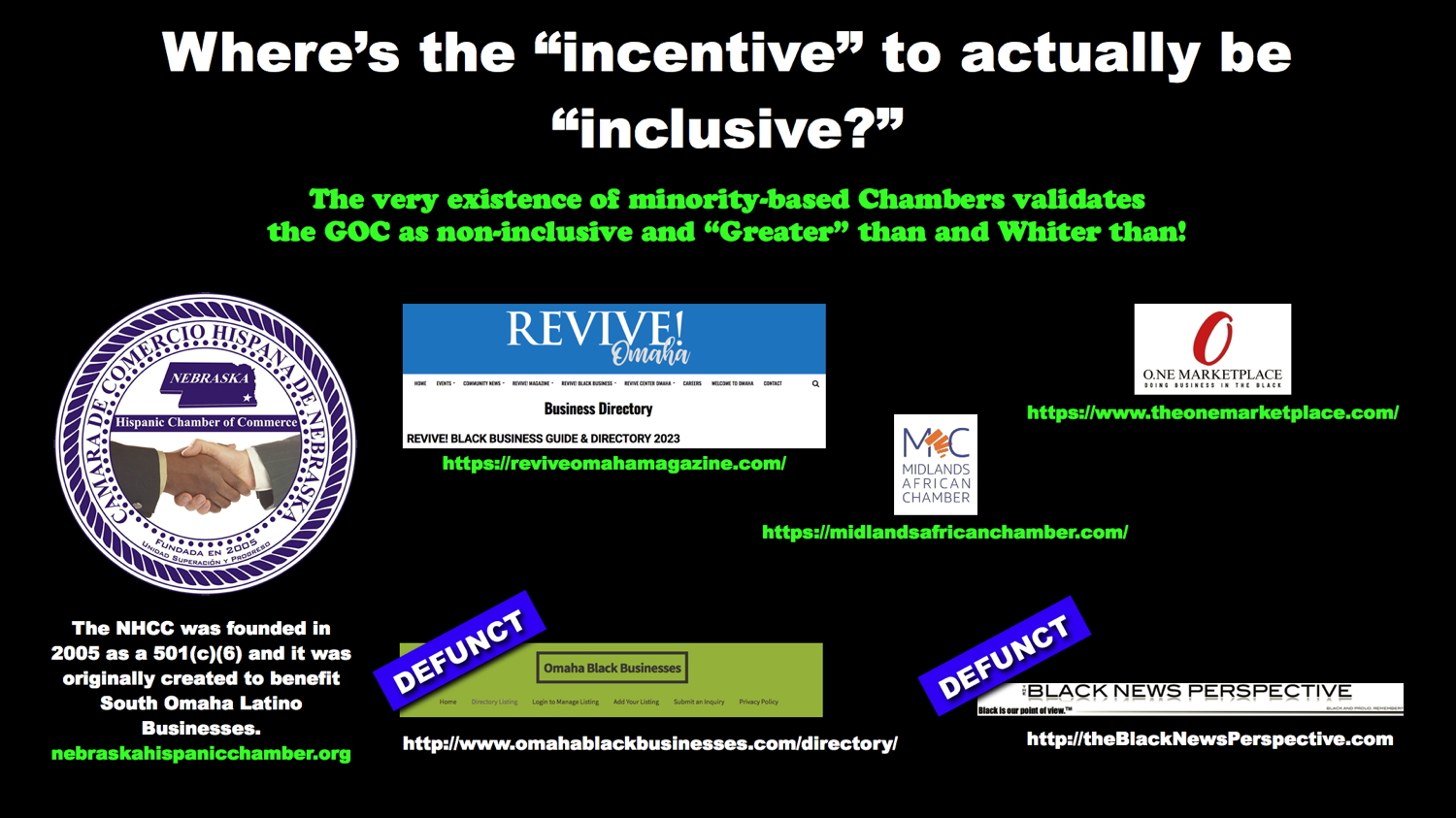
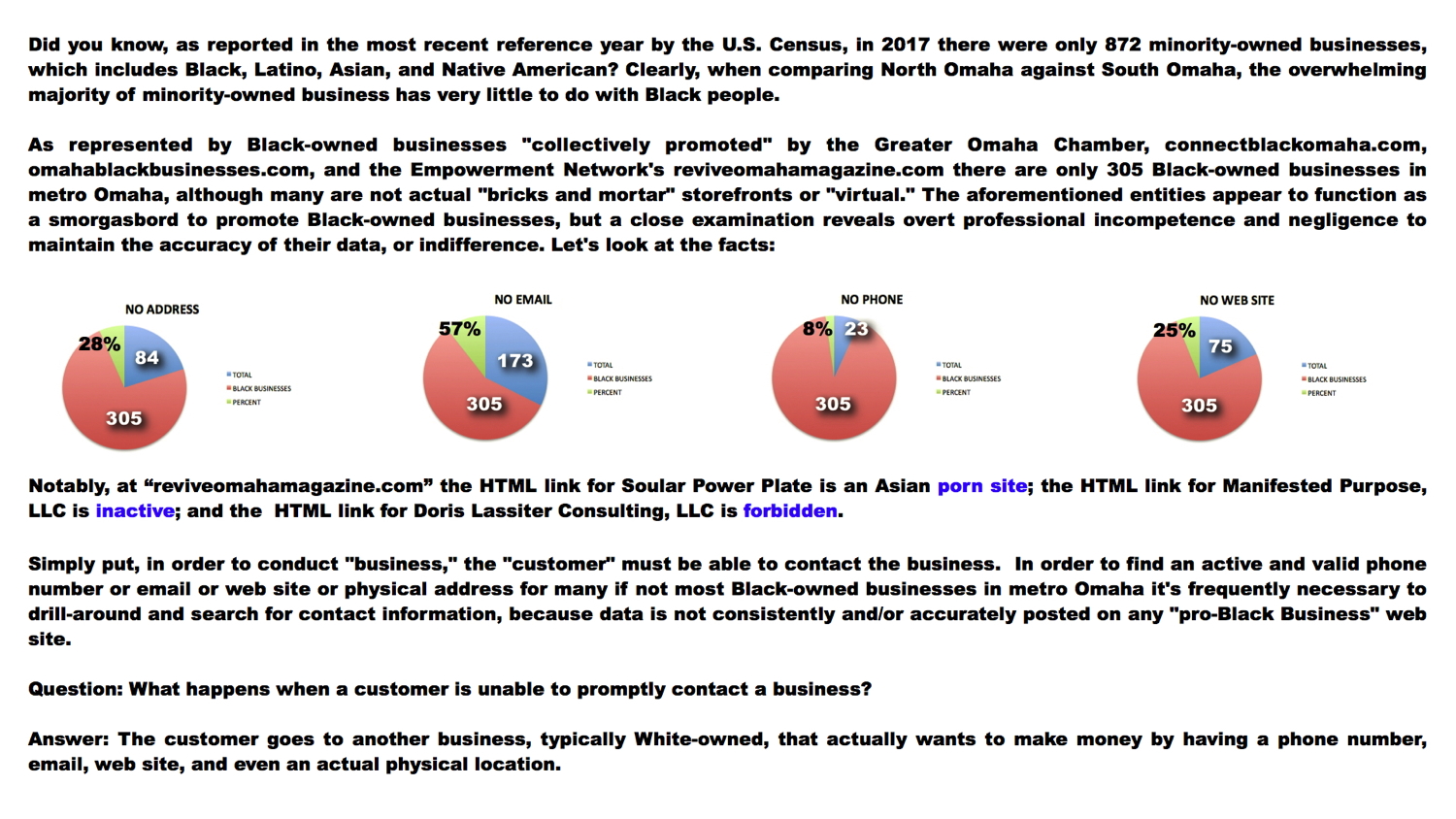


The obvious follow-up question was intentionally NOT asked,
"Since your revenue, profits, or overall commerce did not increase,
why are you still a member?"
Where's the initiative and commitment to
focus less on race and sex, and instead
commit to aggressively increase "commerce"
for all businesses in Greater Omaha?
For example, why doesn't the Greater Omaha Chamber spur "commerce" for all members by doing this:

The above demo conveys the "big picture" of how the GOCC could boldly generate "commerce."
> Imagine the "commerce" and networking generated between GOCC members and how the attached campaign would spur interest, new-membership, and participation.
> Imagine how film studios (Paramount, TimeWarner, Disney, etc.) and exhibitors (Marcus Theatres, AMC, etc.) would likely allocate some of their promotional budget and on-site appearances by a film's director and cast to help GOCC "monetize" such an event.
For example,
"Anyone But You," is a romantic comedy (romcom) in theaters now; clearly, future opportunities can be strategically planned as well.> Imagine similar "commerce campaigns" involving veterans (below), manufacturers, agri-business, insurance, religion, etc., to collectively pool GOCC's membership to spur "commerce" for every category in GOCC's Membership Directory!
Imagine. Imagine boldly generating commerce!
Imagine. Imagine boldly leading the community!

